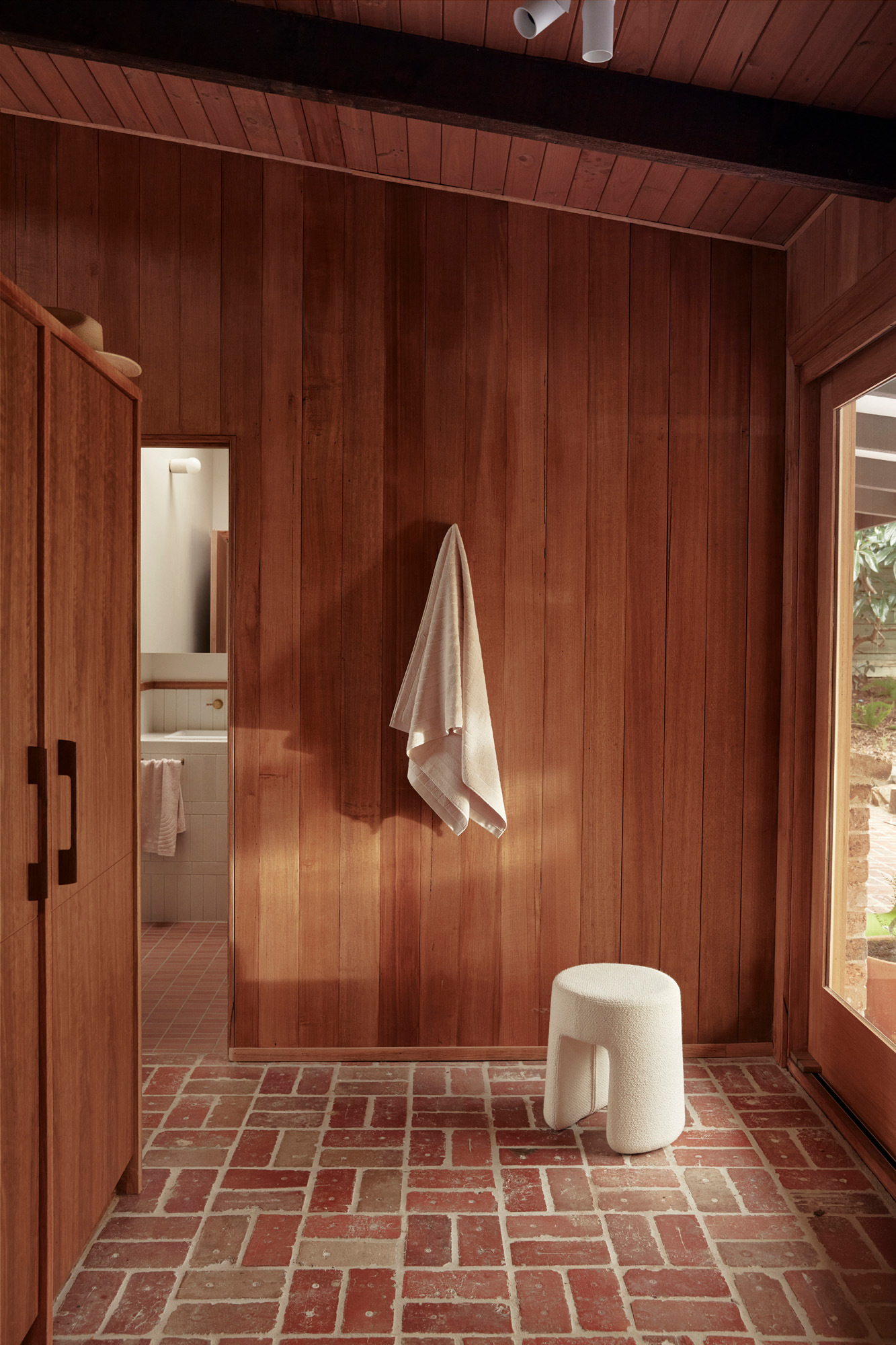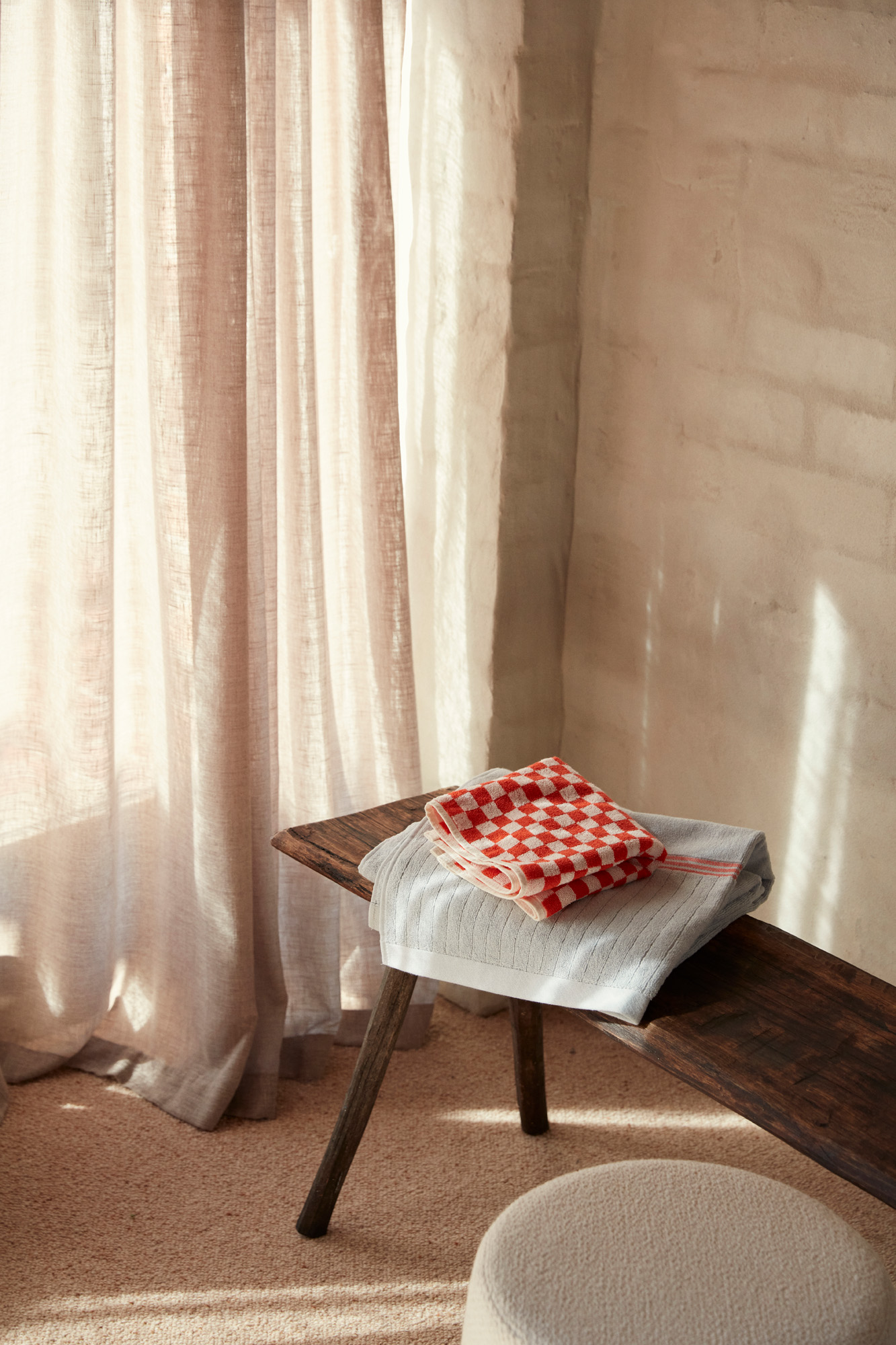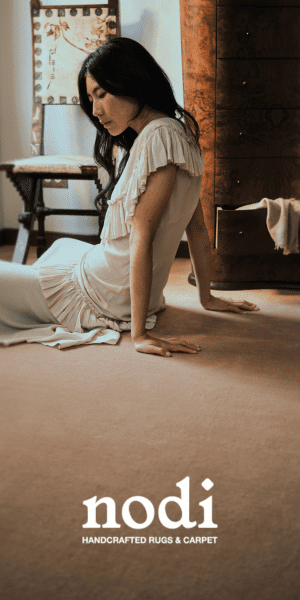The New Zealand designers behind bath textile brand Baina — Anna Fahey and Bailey Meredith — are often inspired by the built environment. Here, Anna Fahey talks about their new collection and pairing it with the eco-conscious Australian architecture of Alistair Knox.
HOME: You shot your new collection in the Fisher House — tell us about this space.
Anna Fahey: It is located in Warrandyte, Victoria and owned by Australian photographer, Sean Fennessy, and his partner, art director/stylist Jess Lillico. It was designed in 1969 by Alistair Knox, who specialised in recycled materials and mud brick, and has recently undergone a sensitive update, led by the very talented Melbourne interior designer Adriana Hanna of Kennedy Nolan Architects.

H: What attracted you to this house to shoot your new collection?
AF: We had actually contacted Sean and Jess to do an interior shoot for us, and, when workshopping potential locations, we suggested an image we’d seen on Instagram of the Fisher House bathroom. Sean responded, “That’s our house”, so we didn’t look any further.
Our initial attraction was the mid-century design, which had been gently updated into this century. The house has an earthy warmth, using materials that are authentic to the era, whilst still feeling current.

Your textiles seem to highlight or reflect something about these interiors — am I right?
AF: Yes. Knowing that we wanted to shoot the new ivory ‘wiggle’ range, we felt it was a fitting space, contrasting nicely with the bathroom’s geometric tiling. The timber walls and brick flooring were so complementary to the sage and chalk. Warrandyte is a very bushy part of Victoria, so bringing the sage indoors felt reflective of the external environment. It’s so pleasing when a shoot comes together like this, where the product looks as strong as its environment.

There is a certain element of nostalgia in your collections; can you give us a few words, images, or names of designers/artists that you feel best align with what you are trying to achieve?
AF: We want our designs to be timeless, but we draw our ideas from a multitude of disciplines. A concept can be sparked from the finest of details. Our ivory wiggle range, launched earlier this year, was inspired by the Ultrafragola mirror, [designed] by Ettore Sottsass in 1970. Our latest collection of tabac and noir was influenced by the retro wrought iron gates found on traditional Paddington terraced homes. Our checkerboard in tabac and noir was brought about by the nostalgia of the classic mahogany checkerboard sets. A new concept, which is due to launch in 2022, is inspired by vintage sportswear.

There are some interesting sustainable materials behind all your products — what are they, and why is that important to you and your brand?
AF: Our towels are made from 100 per cent organic cotton, made in Portugal by a GOTS-certified mill (Global Organic Textile Standard). We wanted Baina towels to have traceability, and to ensure that the raw materials used to make them were regulated from harvest through to manufacture. From the outset, it was immensely important for us to be able to stand by our manufacturing and its environmental impact.




